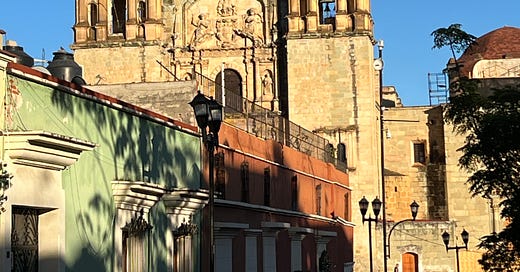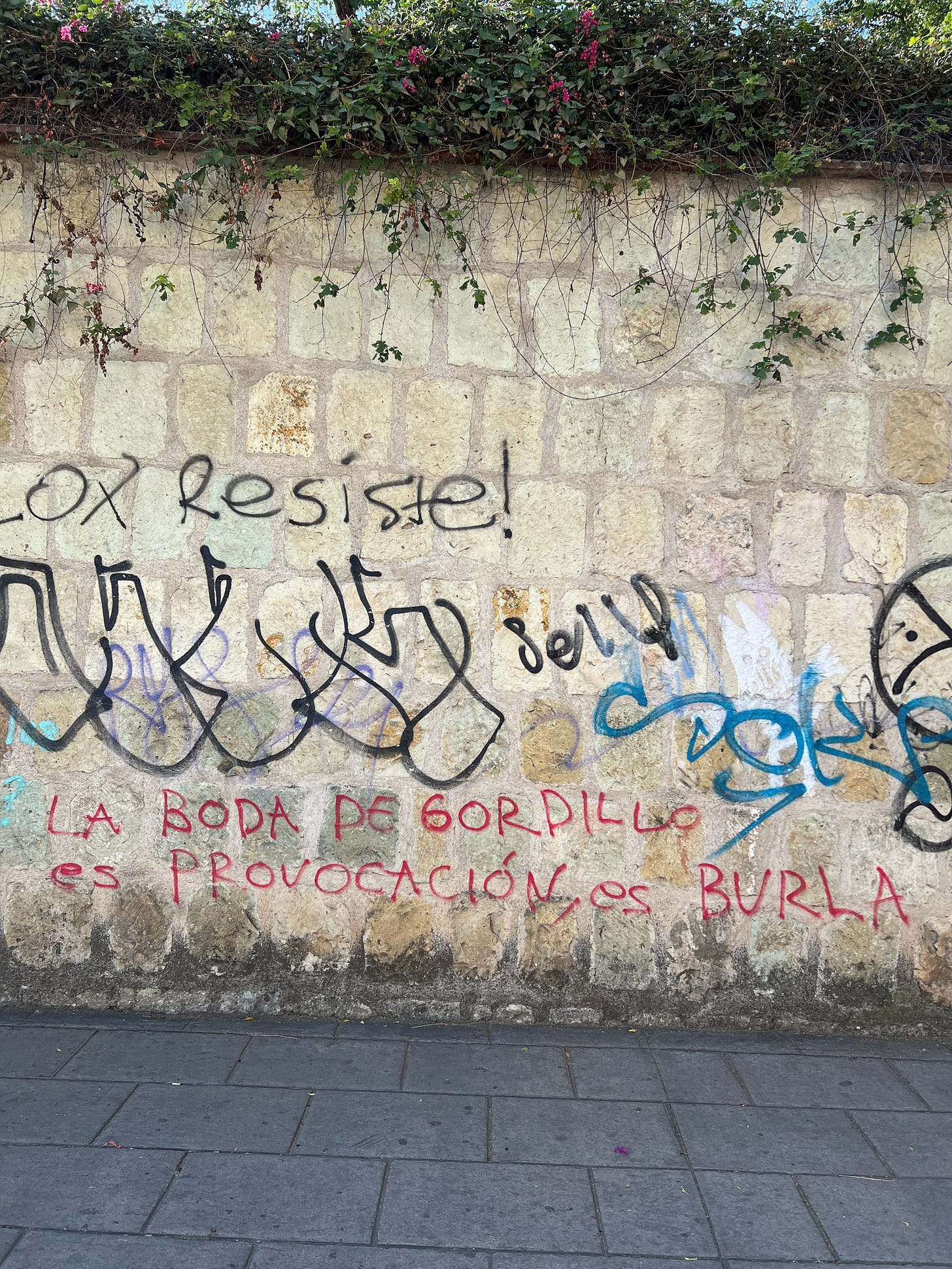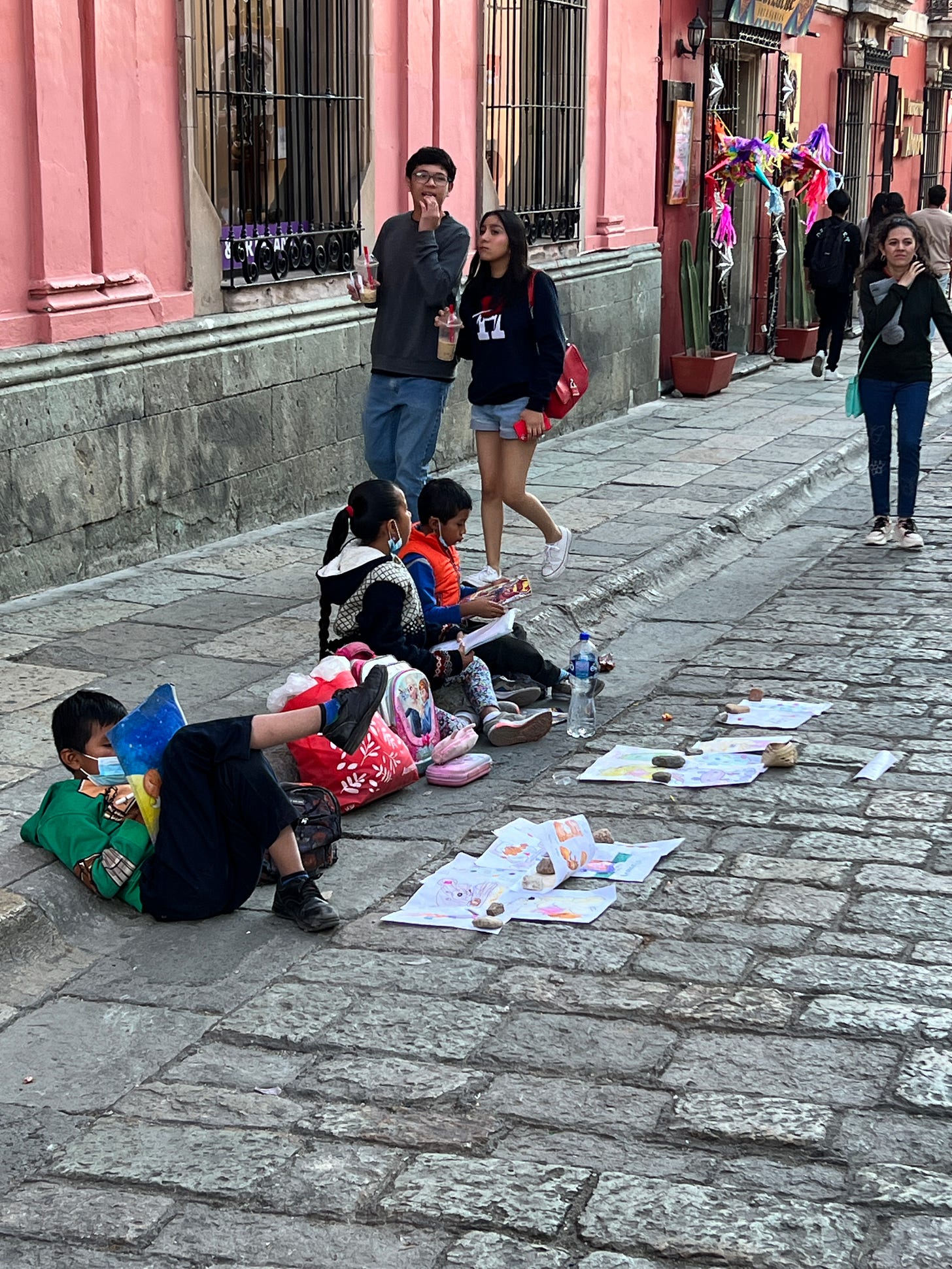When in Oaxaca...
...you can't help but get sucked into the Mexican telenovela that is the Teachers' Unions. At least if you're paying any attention.
There is this beautiful church a block away from my bed and breakfast in Oaxaca, Mexico.
Along with the historical center of Oaxaca, the church has been designated a UNESCO World Heritage Site. It confidently shares that designation with the Taj Mahal and Machu Picchu. If you have traveled to many Catholic countries I’m sure you’ve come to eventually suffer from “cathedral fatigue” because if you have seen one bloody Jesus Christ mannequin alongside a gaudy, golden retablo you have seen them all.
However, you can rest your jaded little heart because the Church and Convent of Santo Domingo de Guzmán still remain spectacular even after nearly five hundred years of incense, candle smoke, and secularization.
Inside the edifice the adornment on the walls and vaulted ceiling look as if the Dominicans who started building the church in 1551 decided to up their game, throw caution about concerns to idolatry to the wind, and ostentatiously bedazzle the place. Maybe the padres even foresaw Rihanna’s outfit for the 2018 Met Gala whose theme was “Heavenly Bodies: Fashion and the Catholic Imagination.”
Connected to the fabulous church is a much more subdued botanical garden, the Jardín Etnobotánico de Oaxaca.
The garden is listed in the popular New York Times travel series 36 hours as a place you must definitely visit on your next three-day jaunt to The Land of Seven Moles. However, after some research (by my boyfriend) and sneaked peeks at what used to be the convent’s old garden I left unimpressed and discouraged from spending the time and money to get inside a place that didn’t seem as lush as advertised in the NYTimes.
Instead, I saw something more interesting OUTSIDE the garden.
There was a provocative message graffitied in blood red and low on the high-stoned, perimeter garden wall. Amongst all the other scribblings of names and random messages I noticed a very specific statement that piqued my curiosity:
LA BODA DE GORDILLO es PROVOCACIÓN, es BURLA.
Translation: Gordillo's wedding is a provocation, it's a JOKE.
Who is Gordillo and why are they coming for this poor person’s wedding?
I asked my tour guide. That’s when the teachers’ union came up.
Of course it did.
Oaxaca has been rocked by teacher union struggles for decades. Corruption, violence, and strikes have plagued Mexican public education nearly since its inception during Porfirio Diaz’s dictatorship. Oaxaca in particular has been a hot spot of such struggles.
Apparently, Elba Esther Gordillo, the former leader of Mexico’s national teachers’ union SNTE (Sindicato Nacional de Trabajadores de la Educación) and simply known as “La Maestra,” got married in the garden in 2021. This graffitti seemed to be from that infamous event a few of years ago.
Although she had been the union’s head for 25 years, and during that tenure one of Mexico’s most powerful women, in 2021 she was no longer in that position.
In fact by that time she had been released from prison in 2018 after serving five years on a conviction of various charges including embezzlement and tax evasion. She was released because she only had one kidney and suffered from some health issues. She was put under house arrest until her legal team was able to get her convictions thrown out completely.
At the time of the wedding the spry 77-year-old, still steeped in Mexican politics although not as union head, was engaged to a 41-year-old attorney named Luis Antonio Lagunas (Go, Esther!) who was actually part of her legal team (such attorney-client romances have occurred even in my family).
Gordillo was arrested and charged with corruption in 2013 “coincidently” after not supporting President Enrique Peña Nieto’s educational reforms. (Did you know teacher positions in Mexico, at one point, could be sold or inherited!?)
Why watch telenovelas when this is all happening IRL and on the news?
La Maestra’s wedding reception to celebrate her May-December union was to take place in the Patio de Huaje located inside the botanical garden listed in the NYTimes’ 36 Houirs in Oaxaca.
But then teachers from a rival teachers’ union (actually, not a separate union but an opposition caucus within the SNTE), the much smaller but highly active CNTE (Coordinadora Nacional de Trabajadores de la Educación) pushed their way onto the garden grounds and destroyed the wedding preparations by knocking over tables and chairs and destroying flower arrangements and, apparently, grafiitting their anti-Gordillo messages on the stone walls. They considered such a corrupt and riviled figure having her wedding in Oaxaca, on their political turf, a provocation, a joke.
Drama.
Gordillo’s wedding was delayed, but ultimately La Maestra held her reception in the same place at a later time. She endured as she always seems to do. The septuagenarian bride also wore white. And the couple danced their first dance to Barry White’s “You’re the First, the Last, My Everything.” The video is pretty remarkable considering all the events that had to happen to get to the nuptials and this strange dance.
Reading articles and watching various videos of Gordillo she seems like the slightly admirable anti-hero, the villain essentially, of many a bad Mexican telenovela. It’s hard to distinguish if the whole situation is sad or funny. But that is true of many things in Mexico and increasingly the United States, too.
Mexico and Oaxaca in particular have a very long, storied history of teacher struggles. I know great minds who have written entire dissertations on the subject.
This graffitti message caught my eye and sent me down a rabbit hole of the sordid Mexican education politics. But it also underscored how places known for the availability of spectacular backdrops for Instagram posts have very real, very human dramas playing out in full view if you can for one second stop being mesmerized by all the piñatas and papel picado. When you travel, ask about the graffitti!
People live, work, get educated, and have their weddings here after all. Life has been going on for centuries here even if all you have is 36 hours to see a place.
Meanwhile, Oaxacan kids peddle their drawings on the street for pesos.









Great story!